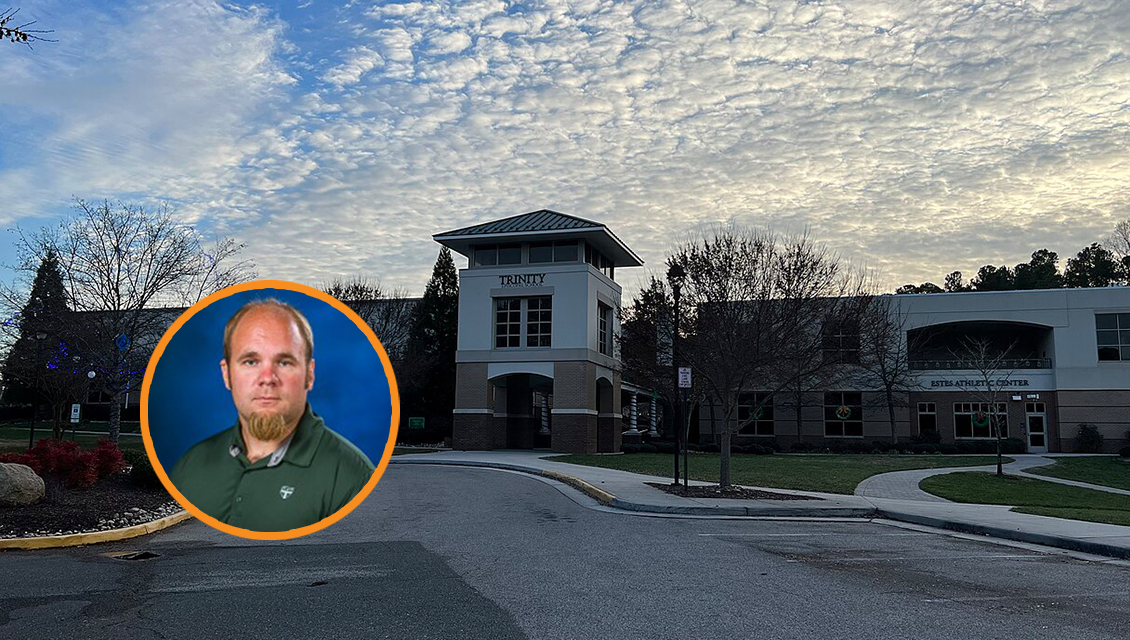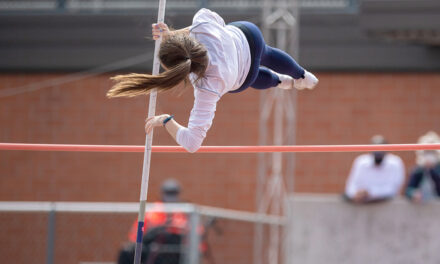Adam Banwarth is the Assistant Athletic Director and Director of Strength and Conditioning at Trinity Episcopal School (VA), but his role stretches much further than his title. Driven by the transformative power of the weight room and a passion for athletic development, his deliberate approach to safety, injury prevention, and holistic athletic development sets a strong standard for what high school students should expect from athletics. Banwarth’s role has grown throughout the years, taking on enough responsibilities around the school’s athletic operations to be considered Associate Athletic Director.
“When I took a job here, they had never had a full time strength coach,” says Coach Banwarth. “And this was in 2009. There was a recession in 2008. A whole bunch of people lost their jobs. So when I was hired here, at a smaller private school, I wanted to make myself essential to the community.”
Steps To Administrative Leadership
Originally hired at Trinity Episcopal School as the Director of Strength and Conditioning, Banwarth embraced roles that extended well beyond his job description. From overseeing facility upkeep to maintaining transportation logistics, he made it his goal to be an indispensable part of the school.
“I became the ‘yes’ man,” Banwarth says. “If someone asked me to do something, I said, ‘yes.’ That’s pretty much how I still operate today. I showed up to non athletic related events. We have a theater program, we have a music program, we have alumni events. I tried to show up to as many things as I could and make as many connections as I could so that I was essential to the school.”
One shining example of Banwarth’s initiative to help the school was his idea to maintain the school’s fleet of minibuses. Banwarth saw the need for bus repairs and made the decision to fix them himself. By personally coordinating maintenance and handling repairs, he ensured comfortable and reliable transportation for all students. His attention to detail and proactive approach reflect his commitment to adding additional value to his role.
“7 or 8 years ago, I started taking on that role because no one else was doing it,” says Banwarth. “So now I’m in charge of the maintenance of our minibuses. We have a mobile company who comes out. Sometimes it might be simple, like changing out a battery. I can do that. The headlights won’t work, fix a blown fuse, get the buses reupholstered, whatever it may be.”
Banwarth’s role as Assistant Athletic Director also includes being present on the sidelines of games to support athletic events. His responsibilities during games involve welcoming visiting teams, addressing logistical issues, and mediating any conflicts between coaches, officials, or parents. He values having a hands-on approach as a way to maintain smooth operations and foster a larger presence in the community.
“In most small private schools, you have to do lots of things that fall outside your normal realm of responsibilities,” Banwarth says. “And so over the years, I’ve been asked to be involved with lots of things, setting up for admissions events, cleaning the gym floor because the cleaning crew didn’t get to it before the game, whatever it may be.”
Fostering student success
Banwarth understands that relationships are the cornerstone of an effective athletic program. The first step he takes in establishing relationships with students is learning every student’s name. He also makes the conscious effort to spark conversations with them, whether during practice or casual interactions on campus. The conversations lead to stronger connections between him and his athletes, creating a culture of trust that allows him to push them more than they thought possible.
“When you get them to push through their normal giving up point, they discover something about themselves that they didn’t necessarily know that they had or could do,” Banwarth says. “That can be really positive for mental health and the desire to want to be here and engage in relationships and overall happiness.”
Banwarth’s approach to strength and conditioning emphasizes simplicity, relying on tried-and-true methods like squats, cleans, and bench presses. The weight room can be intimidating, so he starts athletes simple. Starting with bodyweight exercises, he gradually introduces students to more advanced workout techniques. By working with the school’s Athletic Trainer and focusing on common injury concerns for each sport, Banwarth supports students’ long-term health and performance.
“It’s really nice to have a resource in house who can treat injuries in that emergency situation, but then also provide a rehab setting or even write a whole rehab program,” Banwarth says. “Our athletic trainers have all been good. If you don’t have to go see the doctor and we can take care of things in-house, that’s a pretty valuable asset.”
Coach Banwarth’s career highlights the importance of adaptability for high school athletic directors. Whether managing budgets, facilities, or relationships, Banwarth’s holistic approach has lead to a sustainable and successful athletic program. By blending hard work with genuine care for student well-being, Banwarth continues to make a lasting impact that resonates well beyond athletics.










